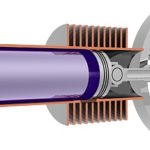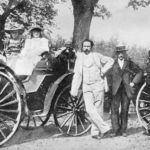The engine is the heart of an automobile. It is a device that converts the chemical energy of fuel into mechanical energy which is used to drive the vehicle. It is basically a device that produces power. In automobiles internal combustion (IC) engines are used. The IC engine is the engine in which combustion (burning of fuel) takes place inside a cylinder and it suddenly generates a high-pressure force. This pressure force generated is used to drive a vehicle or rotate the wheel by use of some mechanism.

Internal combustion engines may be classified as given below-
According to the Design of Engine:
1. Reciprocating Engine (Piston Engine)
In the reciprocating engine, the pressure force is generated by combustion exerted on the piston (A device which is free to move in reciprocation inside the cylinder) and it transmits the pressure force to the crankshaft by use of the connecting rod. So the crankshaft starts to rotate and rotate the wheel of the vehicle.
2. Rotary Engine (Wankel Engine)
In the rotary engine, there is a rotor that is free to rotate. The pressure force generated by the burning of fuel is exerted on this rotor, so the rotor rotates and starts to rotate the wheel of the vehicle.
According to Fuel Use:
1. Diesel Engine (Compression Ignition Engine)
In a diesel engine, diesel is used as a fuel. It is also known as the C.I. engine because there is no extra equipment to burn the fuel. The burning of the fuel starts due to the temperature rise in the compression of air.
2. Petrol Engine (Spark Ignition Engine)
In the petrol engine, petrol is used as a fuel. It is also known as S.I. engine because in this the fuel is burned by the spark generated inside the cylinder by some extra equipment (spark plug).
Also Read:
- Types of Braking System in Automobile
- Valve Timing Diagram of Two Stroke and Four Stroke Engine
- What is Difference Between Petrol and Diesel Engine?
According to the Stroke:
1. Two Stroke Engine:
In a two-stroke engine, the crankshaft rotates one revolution at one time of fuel burn.
2. Four-Stroke Engine:
In a four-stroke engine, the crankshaft rotates two revolutions at one time of fuel burn.
3. Six Stroke Engine:
In a six-stroke engine, the crankshaft rotates three revolutions at one time of fuel burn.
According to the Number of Cylinders:
1. Single Cylinder Engine:
The engine has only one cylinder and a piston connected to the crankshaft. This engine is used in light vehicles (generally in two-wheelers) such as in motorcycles, scooters, etc,
2. Multi-Cylinder Engine:
In this type of engine, more than one cylinder and piston connected to the crankshaft is used. Multi-cylinder engines are used where we require more power. It is mainly used in heavy vehicles like cars, buses, trucks etc.
According to the Arrangement of Cylinder:
1. In-line Engine
The Cylinders are positioned in a straight line one behind the other along the length of the crankshaft.
2. V-type Engine
An engine with two-cylinder inclined at an angle to each other and with one crankshaft that forms a V shape known as V-type engine.
3. Opposed Cylinder Engine
An engine with two cylinders banks opposite to each other on a single crankshaft (V-type engine with 180 degree angle between banks).
4. W-type Engine
An engine same as a V-type engine except with three banks of cylinders on the same crankshaft known as W-type engine.
5. Opposite Piston Engine
In this type of engine, there are two pistons in each cylinder with the combustion chamber in the center between the pistons. In this engine, a single combustion process causes two power strokes, at the same time.
6. Radial Engine
It is an engine with pistons positioned in a circular plane around the central crankshaft. The connecting rods of pistons are connected to a master rod which, in turn, is connected to the crankshaft.
Conclusion
Here we have discussed what is an engine, its definition, and its types. If you find this piece of information valuable and useful then don’t forget to like and share it.







